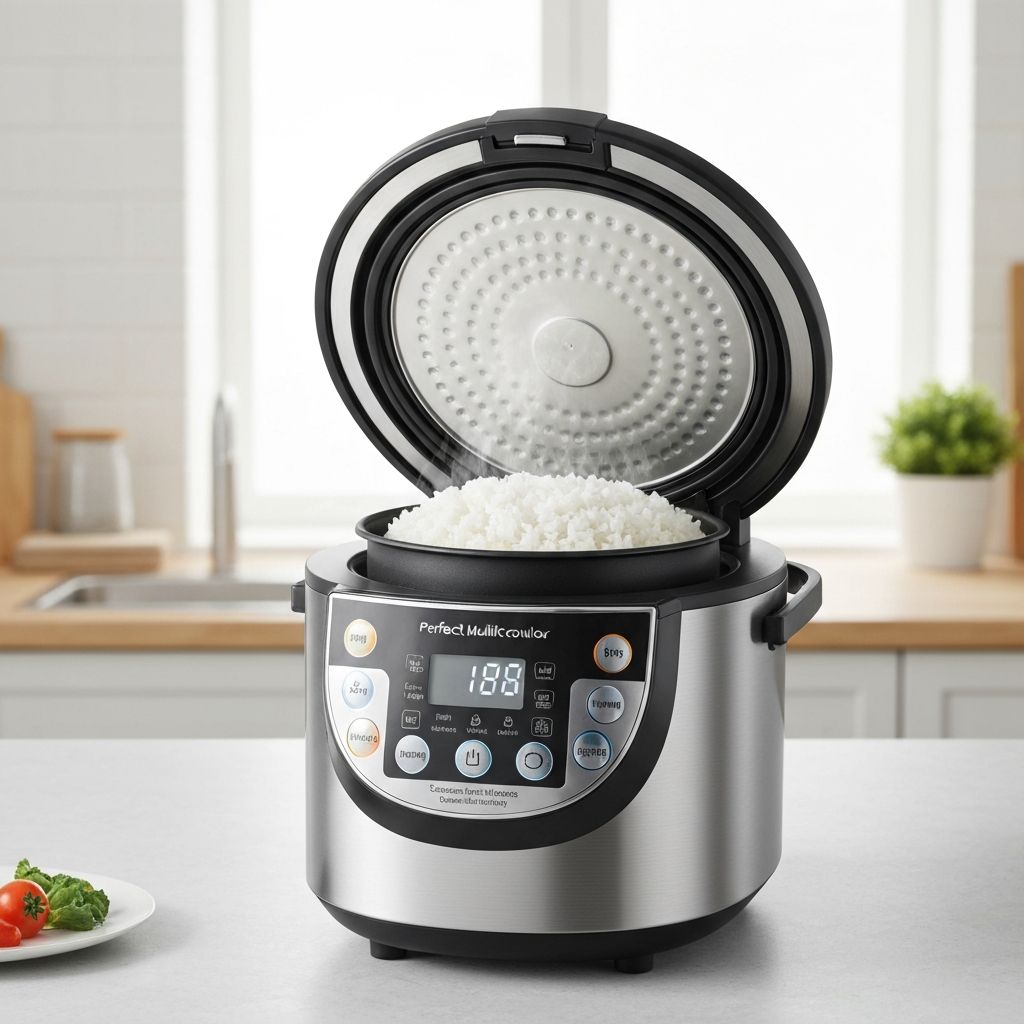Mastering Rice: Perfect Results Every Time

Rice is a staple food for billions of people, yet many home cooks struggle to achieve consistent results. Your multicooker takes the guesswork out of rice cooking, producing perfectly fluffy grains every time. Let's explore the techniques for cooking various types of rice to perfection.
Understanding Rice-to-Water Ratios
The key to perfect rice is the correct water ratio. For white rice, use 1:1 ratio (1 cup rice to 1 cup water). Brown rice needs more water - use 1:1.25 ratio. Jasmine rice is slightly different at 1:0.75 ratio. These ratios work specifically for multicookers; stovetop cooking requires different amounts.
Rinsing: When and Why
Rinsing rice removes excess starch, preventing gummy results. Rinse white rice 2-3 times until water runs clear. Brown rice needs less rinsing. Jasmine and basmati rice should always be rinsed. However, some enriched rice shouldn't be rinsed as it removes added nutrients - check the package.
White Rice Perfection
Add rinsed rice and water to the pot in a 1:1 ratio. Add a pinch of salt and a teaspoon of oil or butter for flavor and to prevent sticking. Use the rice function or pressure cook on high for 3 minutes, then let pressure release naturally for 10 minutes. Fluff with a fork before serving.
Brown Rice Mastery
Brown rice takes longer due to its intact bran layer. Use 1:1.25 ratio of rice to water. Pressure cook on high for 22 minutes, then natural release for 10 minutes. The result is perfectly tender brown rice with a pleasant, nutty texture. Add aromatics like bay leaves or garlic for extra flavor.
Jasmine and Basmati Rice
These aromatic rice varieties need less water - use 1:0.75 ratio. Rinse thoroughly until water is clear. Pressure cook for just 3 minutes on high, then natural release for 10 minutes. The result is fragrant, separate grains perfect for Asian and Indian dishes.
Wild Rice and Rice Blends
Wild rice isn't actually rice but a grass seed that requires longer cooking. Use 1:1.5 ratio and cook for 25-30 minutes. For rice blends, follow the package directions but reduce liquid slightly since the multicooker retains more moisture than stovetop cooking.
Troubleshooting Common Issues
If rice is too wet, use less water next time or let it sit with the lid off for 5 minutes. If it's too dry or crunchy, add a bit more water. Burnt bottom? Make sure you're using enough liquid and not using the sauté function after adding rice. Adjust ratios based on your specific model and altitude.
Flavoring Your Rice
Transform plain rice into a flavorful side dish by cooking it in broth instead of water. Add aromatics like garlic, onion, or ginger. Stir in herbs, spices, or citrus zest after cooking. Try coconut milk for Thai-inspired rice, or tomato sauce for Spanish rice. The possibilities are endless!
Conclusion
Mastering rice in your multicooker opens up a world of culinary possibilities. Perfect rice is the foundation of countless meals, from simple weeknight dinners to elaborate entertaining. With these techniques and ratios, you'll achieve consistent, restaurant-quality results every time. Experiment with different varieties and flavorings to discover your favorites!